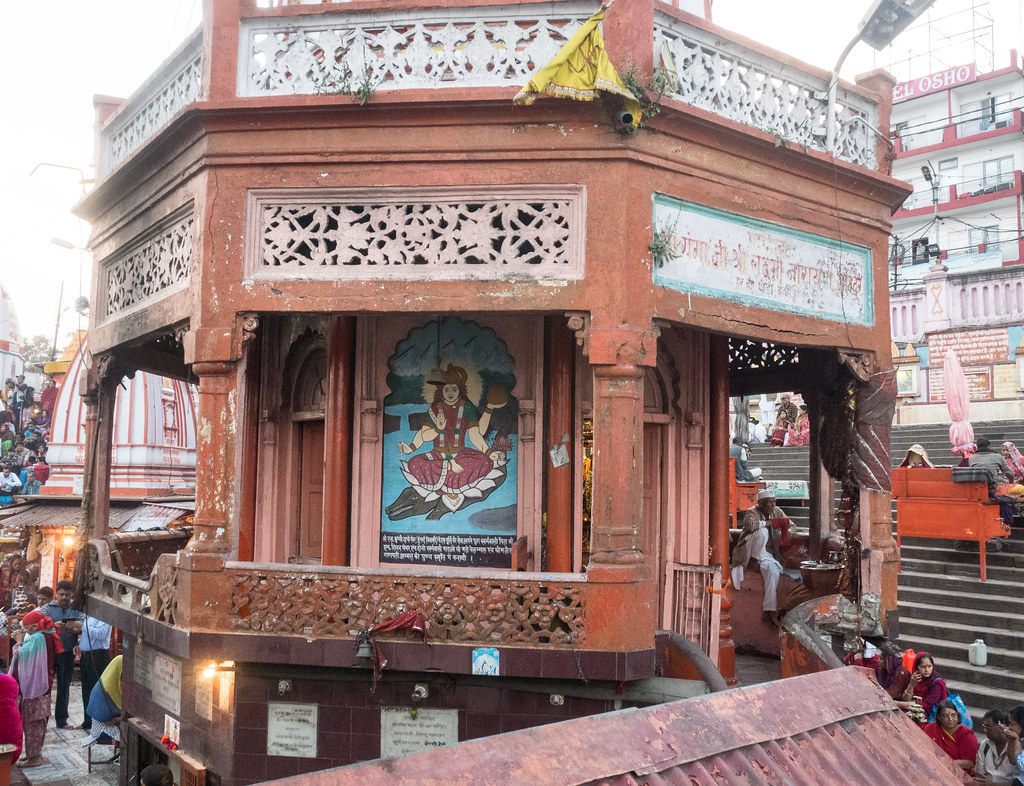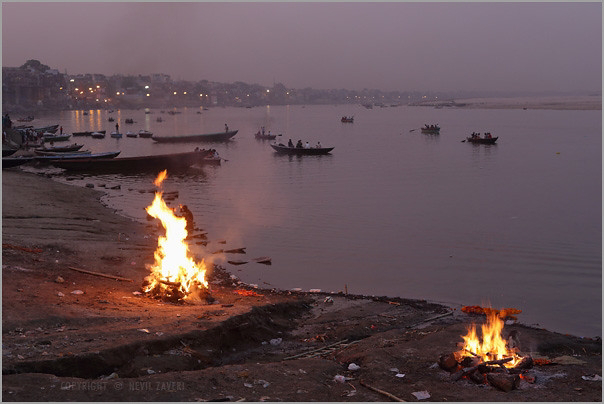"Ganga: The Lifeline of India" is a blog dedicated to exploring the significance and importance of the river Ganga in India. The Ganga, also known as the Ganges, holds immense cultural, religious, and ecological significance for the country. This blog aims to shed light on the river's spiritual importance, and its role in india. "Ganga: The Lifeline of India" seeks to create awareness about the river's vital role in the lives of millions of people and the urgent need for its conservation and preservation.
So let's get start the ways Ganga helps us not only by religious significance but also economic significance.
Religious importance of Ganga to India.
The Ganga holds immense religious importance in India, particularly within Hinduism, the dominant religion in the country. Here are some key aspects of the religious significance of the Ganga:
The Ganges is believed to have purifying properties, both physically and spiritually. Bathing in its holy waters is believed to be an act of purification, washing away sins and providing spiritual salvation. Hindus believe that by taking a dip in the Ganges, they can rid themselves of impurities and attain spiritual purity.
In our Hindu mythology, the Ganga is personified as the goddess Ganga. She is depicted as a beautiful goddess with a divine presence. She is considered the daughter of the mountain God Himalaya and the sister of the river goddesses Yamuna and Saraswati. People worship Ganga as a kind and caring deity, and she is highly respected as a divine mother.
The banks of the Ganga are dotted with many pilgrimage (तीर्थ) sites that hold great religious importance. Cities like Varanasi, Haridwar, and Allahabad (Prayagraj) are considered very pure due to their association with the Ganga. Devotees from all over the country and abroad come to India and visit to these holy sites, seeking spiritual blessings and performing rituals.
The Ganges is a central element in various religious rituals and offerings. There is a practice of worshiping, lighting flowers and lamps in the river. It is believed that immersing the idols or ashes of the dead in the Ganges eases their journey after death. Many Hindus also perform an ancestral rite known as "Pind Daan" on the banks of the Ganges to pay homage to their ancestors.
The Ganga is closely related with several festivals and celebrations in India. The Kumbh Mela, held every 12 years (and the Ardh Kumbh Mela every 6 years), witnesses millions of devotees gathering on the banks of the Ganga to take a holy dip and seek spiritual blessings. Other festivals like Ganga Dussehra and Ganga Saptami are dedicated to celebrating the river and its divine importance.
Symbolism: The Ganges holds deep symbolism within Hinduism. It is often called "Moksha Dayini", the giver of liberation (मुक्ति) or salvation (मोक्ष). The flow of the river is seen as representative of the flow of life, and immersing oneself in the Ganges is believed to dissolve worldly attachments and lead to spiritual growth.
The religious importance of the Ganga in India is deeply ingrained in the beliefs, rituals, and practices of Hinduism.
Ganga helping India in such ways..
The Ganges River, also known as the Ganga, is playing a vital role in helping India in various ways. Here are some ways in which the Ganga is benefiting India:
Water Supply: The Ganges serves as an important source of water for millions of people living along its banks. It provides water for drinking, irrigation, and other domestic uses, supporting agriculture and the livelihoods of communities in the region.
Agriculture: The fertile soil around the Ganga and its tributaries is highly suitable for agriculture. Farmers depend on the river water for irrigation, which helps in cultivating crops and improving agricultural productivity.
Economy: The Ganga plays a crucial role in India's economy. It supports various industries such as fishing, transportation, and tourism. Fishing communities depend on the river for their livelihood, and the river's ecosystem attracts tourists from around the world.
Biodiversity: The Ganga is home to a diverse range of flora and fauna. The river's rich biodiversity contributes to the overall ecological balance in the region. Protecting the Ganga's ecosystem helps preserve the habitat of various species, ensuring their survival.
Spiritual and Cultural Significance: The Ganga holds immense spiritual and cultural significance for the people of India. It is considered sacred by millions of Hindus, and people from all over the country travel to the river to perform religious rituals and seek purification. This cultural aspect strengthens the social fabric of India.
Tourism: The Ganges is a major tourist attraction, attracting both domestic and international visitors. The river's natural beauty, historical sites and religious significance attract tourists who contribute to the local economy by spending on accommodation, transport and other services.
Importance of Ganga for other countries.
The Ganges River, often referred to as the Ganga, holds immense importance not only to India, where it originates and flows through, but also to other countries in the region. Here are some reasons why the Ganges is important o other nations
Nepal: The Ganges originates in the Himalayan region of Nepal, making it crucial to the country. The river is known as the "Bhagirathi" in Nepal and is considered sacred by Hindus. It plays a significant role in the religious and cultural practices of the Nepalese people.
Bangladesh: The Ganges is the lifeline of Bangladesh, as it flows through the country for about 300 kilometers. It is known as the "Padma" in Bangladesh and is a vital source of water for irrigation, agriculture, and fishing. The river is essential for the country's economy, providing fertile soil and supporting the livelihoods of millions of people.
Bhutan: While the Ganges does not flow directly through Bhutan, the country is located in the Ganges basin. Bhutan's rivers, such as the Amo Chu and the Mo Chu, are tributaries of the Ganges. These rivers contribute to the overall water flow of the Ganges and are important for Bhutan's water resources, agriculture, and hydropower generation.
Here are some medicinal benefits of ganga water.
Antibacterial properties: It is believed that Ganga water possesses natural antibacterial properties due to its high alkalinity and the presence of certain minerals. It is said to help in the treatment of skin infections, wounds, and other bacterial ailments.
Purification: Ganga water is considered sacred and is often used for purification purposes in religious rituals and ceremonies. Some people believe that using Ganga water for bathing or drinking can help cleanse the body and purify the soul.
Mineral content: The River Ganges originates in the Himalayas and passes through various regions, accumulating minerals along the way. Supporters claim that Ganga water contains a high concentration of minerals, such as calcium, magnesium, and trace elements, which may offer some health benefits when consumed.
Healing properties: Ayurvedic medicine, an ancient Indian system of medicine, attributes various healing properties to Ganga water. It is sometimes used in Ayurvedic treatments for certain ailments, such as skin diseases, digestive disorders, and joint pain.
After all of these benefit and importance of Ganga, people of India still throw their garbage and waste materials on Ganga. The result is Ganga is polluted now. There are so many reasons behind the polluted Ganga and one of them is at individual level we throw our garbage on Ganga with knowing that this will be harmfull for Ganga river and the marine animals living on Ganga. Every day so many marine animals of river Ganga are dead just because of the plastic you thow last time when you were visited Ganga.
The pollution of the Ganges can be attributed to various factors:
1. Industrial Pollution.
2. Municipal Sewage and Solid Waste
3. Religious and Cultural Practices.
4. Agricultural Runoff.
5. Deforestation and Soil Erosion.
The Indian government and various organizations have been working on initiatives such as the Namami Gange program to clean and rejuvenate the river, but significant efforts are still required to restore the Ganges to a healthy state.
At the end, Ganga is a symbol of India's rich cultural heritage and plays a vital role in the lives of millions of people. It is not only a source of water but also a symbol of spirituality, tradition, and interconnectedness for millions of people in the region.
That's it for today's blog, Thank you🙏















0 Comments